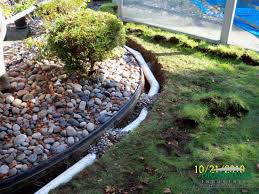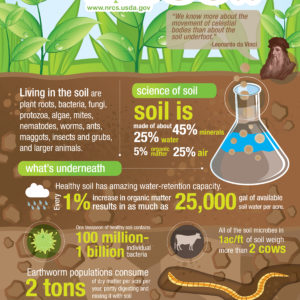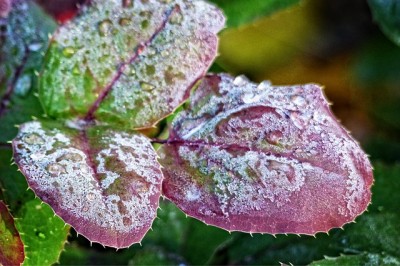One thing about gardening that most gardeners know is that timing is everything and gardening timing does not necessarily follow the calendar from year to year.
In early May, soils can still be soggy and wet and are easily compacted by machinery such as a plow or rototiller or even foot traffic. Compaction of a wet soil leads to a decrease in the amount of macro-pores in the soil that are so necessary to drain excess water. Macro-pores also provide pore spaces filled with air that are quite necessary for plants roots to respire, as they must have oxygen for good growth.
Another im portant duty before planting the garden is performing a soil test. Over time, soils in northeast Ohio tend to be on the acid side and may need an addition of lime to raise the soil ph. In a vegetable garden, a ph of about 6.5 to 7 is ideal for most crops. Vital nutrients i
portant duty before planting the garden is performing a soil test. Over time, soils in northeast Ohio tend to be on the acid side and may need an addition of lime to raise the soil ph. In a vegetable garden, a ph of about 6.5 to 7 is ideal for most crops. Vital nutrients i
n the soil are mostly available for garden plants and not tied up if the ph is too much on the acid side. While an over-the-counter kit can be useful, it is not as accurate as a university soil test kit in which several soil samples collected in different areas of the garden are mixed in a clean bucket resulting in an “average” sample when the sample is taken at a 6 inch depth. University soil test kits from Penn State University are available, for a reasonable price, at many garden centers and feed stores such as Dayton Nurseries in Norton or Copley Feed in Copley. The results of the soil test will reveal if lime or any other nutrients need incorporated into the soil before planting.
Finally, in early May, there is that “F- word”, the one all gardeners fear – frost! Even a light frost can stunt or kill heat loving vegetables such as tomatoes and peppers. Conversely, cool weather crops such as broccoli,  brussel sprouts, onions (sets) and cauliflower thrive in the cooler weather in early spring and the shorter days which prevent these vegetables from “bolting” during the long daylight hours. Unfortunately, even if frost is prevented by covering the plants on cold, frosty nights, heat loving vegetables’ growth is slow or non-existent because of the cold and sometimes wet soil. Officially, the last chance of frost date for northern Ohio away from Lake Erie is May 30th, although frost has occurred in some areas as late as June 15th, as it did in 1972.
brussel sprouts, onions (sets) and cauliflower thrive in the cooler weather in early spring and the shorter days which prevent these vegetables from “bolting” during the long daylight hours. Unfortunately, even if frost is prevented by covering the plants on cold, frosty nights, heat loving vegetables’ growth is slow or non-existent because of the cold and sometimes wet soil. Officially, the last chance of frost date for northern Ohio away from Lake Erie is May 30th, although frost has occurred in some areas as late as June 15th, as it did in 1972.
Just a final word to the wise for planting the garden, don’t get too excited by a succession of warm days in early spring. Watch the extended weather forecasts and never rush the planting of the garden!